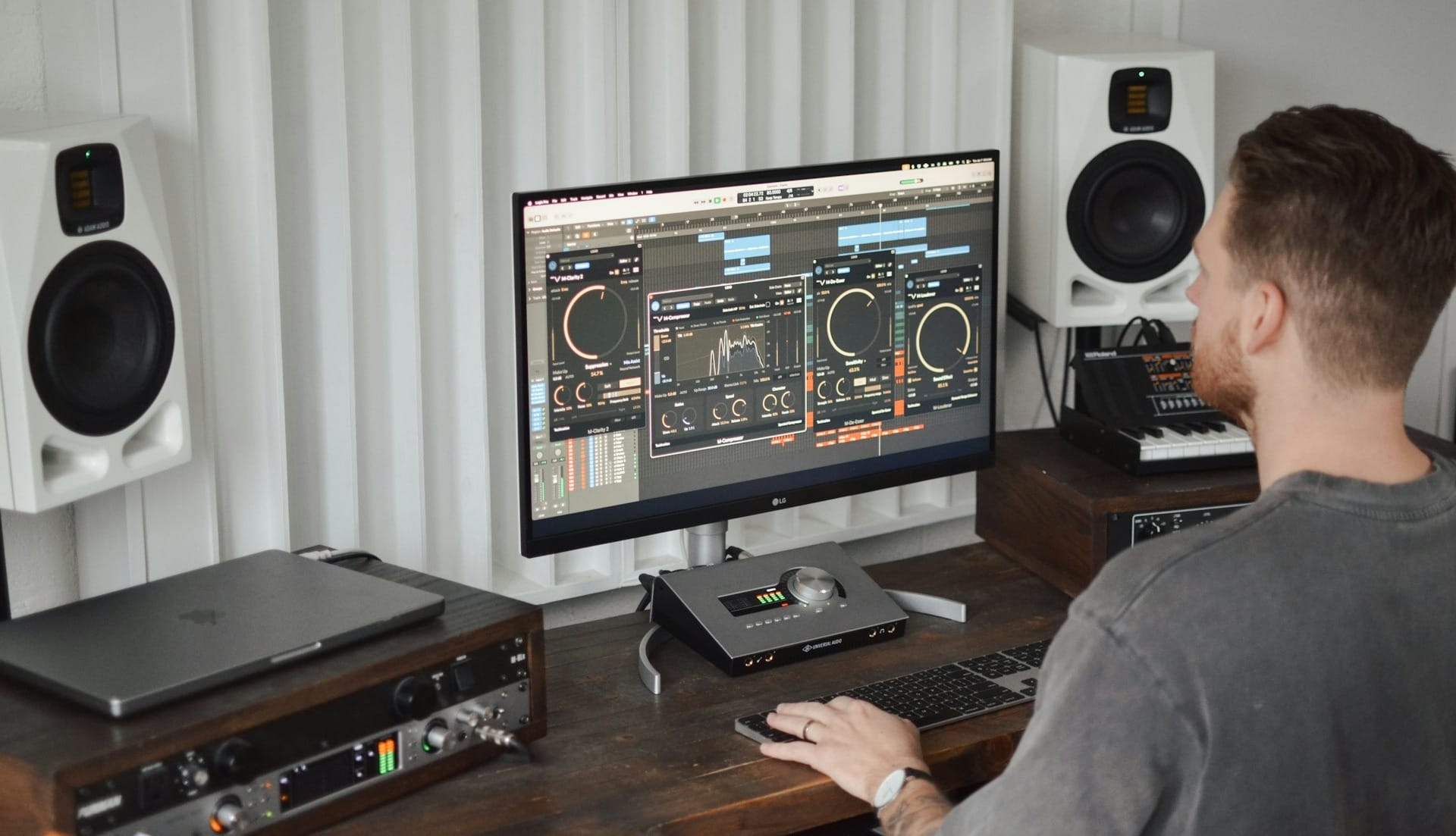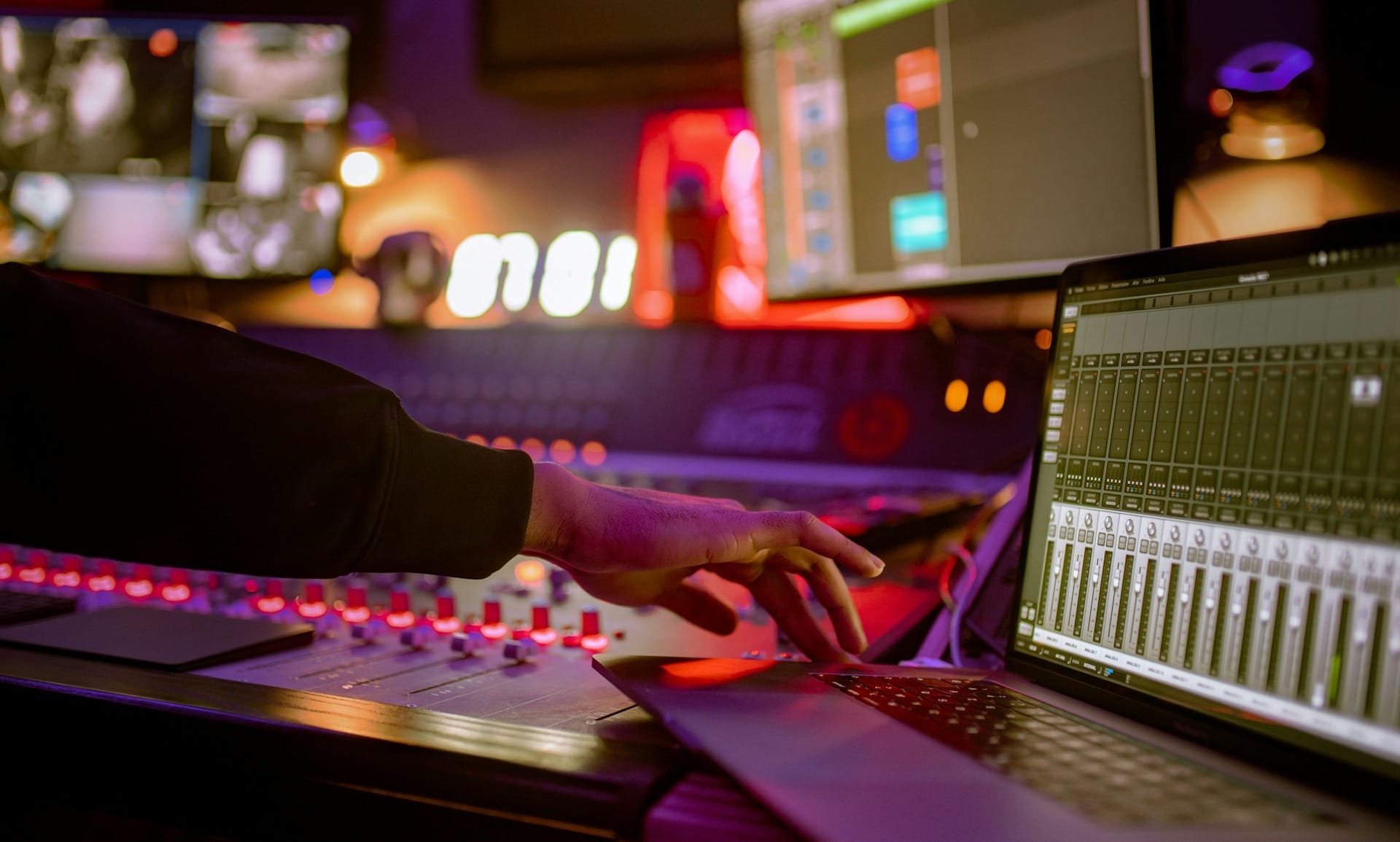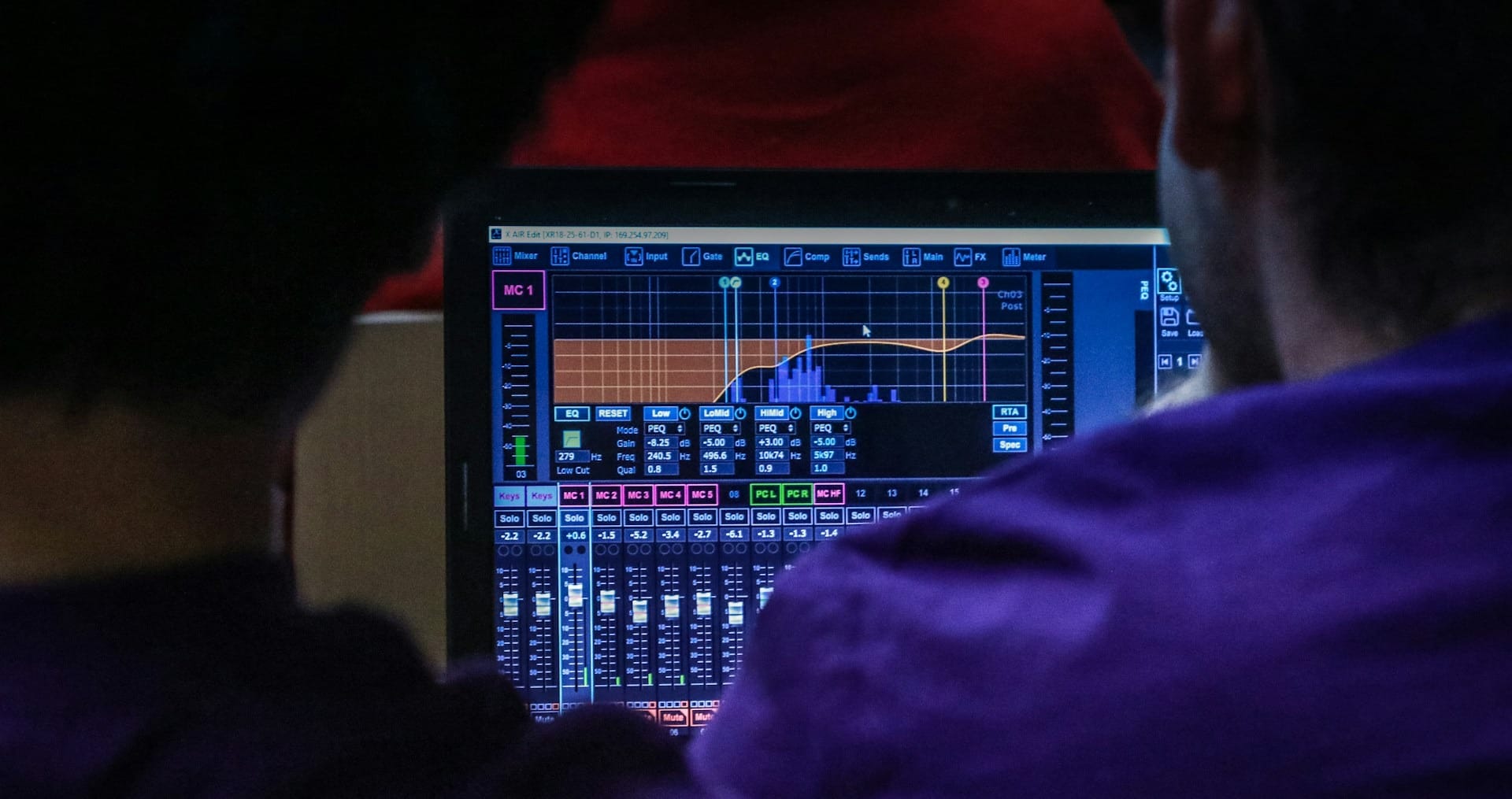Glossary of Mixing Terms Every Producer Should Know
Learn essential mixing lingo. Get clear explanations, simple examples, and helpful context for aspiring producers and anyone curious about studio basics.

Step into any studio, and you’ll hear a language all its own — some technical terms, some borrowed from everyday language, and some that only make sense after hours spent in front of a mixing desk. The studio vocabulary is a patchwork built from decades of trial, error, and discovery. For a newcomer, it can feel like being handed a map with half the landmarks missing.
This glossary isn’t a checklist or a crash course. It’s a collection of the words and phrases that shape how producers talk, think, and solve problems in the mix. Each term here is explained with the kind of context you only pick up from real sessions — what it means, why it matters, and how it shows up when you’re working on your own tracks. No empty metaphors, no broad generalizations. Just the words that shape the way music gets made.
1. Core Mixing Concepts

⦿ Mixing is the process of blending multiple recorded tracks together into a cohesive whole. It involves adjusting levels, panning, EQ, dynamics, and effects to create a balanced and engaging final product. The goal is to make each element of the song shine while serving the overall vibe and intent of the music.
⦿ Track is an individual audio recording within your session (vocals, drums, guitars, synths, etc.) Each track can be processed separately before being combined in the mix.
⦿ Mixdown is the process of combining all the individual tracks into a final stereo (or surround) file. It's where all your mixing decisions come together to create the finished song.
⦿ Bus is a channel that receives audio from multiple tracks, allowing you to process them together. For example, you might send all drum tracks to a drum bus for group compression or EQ.
⦿ Master bus is the final channel where all audio is routed before being exported. Processing here affects the entire mix.
2. Frequency and Tonal Terms

⦿ EQ (Equalization) – the process of adjusting the balance of frequency content in a sound. It can be used to boost or cut specific frequencies, helping instruments fit together and correcting tonal imbalances. Parametric EQ offers precise control over frequency, bandwidth (Q), and gain for each band. Graphic EQ, on the other hand, features fixed frequency bands, each with its own gain slider
⦿ Filters help clean up your mix by removing sounds that don’t belong, so everything fits together nicely without getting messy or noisy. High Pass Filter (HPF) allows frequencies above a set point to pass through, cutting lows, while Low Pass Filter (LPF) allows frequencies below a set point to pass through, cutting highs.
⦿ Air is the ultra-high-frequency content (typically above 12 kHz) that adds a sense of openness and sparkle to a mix, especially vocals and cymbals.
⦿ The body of a sound is its midrange fullness, usually between 200–600 Hz. If a sound is “missing body,” it might feel thin or weak.
⦿ Boominess is an overpowering buildup of low or low-mid frequencies, often in drums or bass, causing a muddy or indistinct sound.
⦿ A boxy sound lacks low and high frequencies, with an excess of midrange (often between 300–800 Hz). It can make instruments sound muffled or confined.
⦿ Presence is the emphasis of upper-midrange frequencies (around 2–6 kHz), helping vocals and lead instruments cut through the mix.
⦿ A muddy mix suffers from too much low-mid buildup (typically 200–500 Hz), which makes it hard to distinguish individual elements.
⦿ Sibilance refers to harsh “s” or “sh” sounds in vocals, usually between 5–8 kHz. Excessive sibilance is often tamed with a de-esser.
⦿ Warmth is a subjective term describing a pleasing emphasis in the low-mids (often 200–500 Hz), giving a mix or instrument a rich, full character.
⦿ Fizz is an exaggerated emphasis in the upper high-mid to lower-high end range, often in vocals, cymbals, or guitars. It adds energy, but too much can be harsh.
3. Dynamics and Level Control

⦿ Dynamics is the variation in loudness between the quietest and loudest parts of a track. Dynamic control is essential for expressive, engaging mixes.
⦿ Compressor helps control the difference between the loudest and quietest parts of a sound. It works by turning down peaks that go above a certain level, known as the threshold. Once the audio crosses that point, the compressor kicks in and reduces its volume based on the ratio you choose (for example, 2:1 means that for every 2 dB over the threshold, only 1 dB gets through).
How quickly it starts working is controlled by the attack time — a fast attack clamps down immediately, while a slower one lets transients through for a punchier sound. The release setting controls how long the compressor waits before letting go after the signal has dropped back below the threshold.
Compression can smooth out uneven performances, add punch or sustain to instruments, and give the entire mix a more polished and consistent sound.
⦿ Limiter is a type of compressor with a very high ratio, used to prevent peaks from exceeding a set level. It’s often used on the master bus to avoid clipping.
⦿ Noise gate mutes signals below a certain threshold, often used to clean up unwanted noise between phrases.
⦿ Envelope describes how a sound evolves over time, typically broken down into Attack, Decay, Sustain, and Release (ADSR).
⦿ Headroom is the amount of volume available before distortion occurs. Maintaining headroom prevents unwanted clipping and distortion.
⦿ Clipping happens when a signal exceeds the maximum level a system can handle, resulting in harsh, unpleasant distortion.
⦿ Gain staging is the process of managing levels at every point in your signal chain to maintain optimal headroom and avoid distortion.
⦿ Sidechaining uses one signal to control the compression of another. A classic example is making the bass duck in volume every time the kick drum hits, creating space and rhythmic movement.
⦿ Pumping is the audible, rhythmic rise and fall in volume caused by aggressive compression. It's often used as a creative effect in dance music.
4. Spatial and Stereo Imaging

⦿ Panning places a sound in the stereo field, from left to right. Effective panning creates width and separation, helping each instrument find its place in the mix.
⦿ Stereo image is the perceived width and depth of a mix. A wide stereo image feels immersive, while a narrow one feels more centered.
⦿ Imaging is the process of accurately positioning sounds in the stereo field, making it possible to distinguish between instruments and create a sense of space.
⦿ Mono means a single audio channel. Checking your mix in mono ensures that it translates well on all playback systems.
⦿ Phase describes the relationship between two or more waveforms. Poor phase alignment can cause cancellations, making sounds disappear or lose impact.
⦿ Comb filtering occurs when two identical signals are combined with a slight delay, causing certain frequencies to cancel out and others to be reinforced, resulting in a hollow or metallic sound.
⦿ Reverb simulates the reflections of sound in a physical space, adding depth and a sense of environment to a mix.
⦿ Delay is an effect that repeats a sound after a set period, creating echoes and rhythmic patterns.
5. Effects and Processing

⦿ Equalizer (EQ). Already covered earlier in the glossary, but worth repeating here: EQ is one of the most common tools in mixing. It lets you shape the tone of a sound by adjusting its frequency content — removing unwanted lows, bringing out clarity, or making space for other instruments. You’ll find several types, each suited to different mixing tasks.
⦿ Exciter enhances high frequencies using harmonic distortion and phase manipulation, adding brightness and clarity.
⦿ Saturation adds harmonic distortion, mimicking the warm, pleasing qualities of analog tape or tubes.
⦿ Distortion is the intentional or unintentional alteration of a sound’s waveform, often used for creative effect.
⦿ Chorus thickens a sound by duplicating it and slightly altering the timing and pitch of the copies.
⦿ Flanger creates a sweeping, whooshing effect by mixing a delayed version of the signal with the original.
⦿ Phaser splits the signal and shifts the phase of one part, creating a swirling, spacey effect.
⦿ De-esser is a specialized compressor that targets sibilant frequencies, reducing harsh “s” and “sh” sounds in vocals.
⦿ Automation allows you to program changes in parameters (volume, panning, effects) over time, adding movement and interest to your mix.
⦿ Parallel processing involves duplicating a signal, processing the copy, and blending it back with the original. This technique is often used for parallel compression or reverb to retain dynamics while enhancing presence.
6. Workflow and Technical Terms
⦿ Digital Audio Workstation (DAW) is the software used for recording, editing, mixing, and mastering music. Popular DAWs include Ableton Live, Logic Pro, FL Studio, and Pro Tools.
⦿ Plugin is a software tool that adds functionality to your DAW, such as effects, instruments, or analyzers.
⦿ Buffer size determines how quickly your computer processes audio. Smaller buffer sizes mean lower latency but higher CPU load; larger sizes are more stable for mixing.
⦿ Latency is the delay between when a sound is played and when it’s heard, often caused by processing in the DAW or audio interface.
⦿ Bit depth measures the resolution of your audio. Higher bit depths capture more detail and dynamic range.
⦿ Sample rate is the number of times per second audio is sampled. Higher sample rates mean higher fidelity but larger files.
⦿ Stems are groups of audio tracks (e.g., all drums, all vocals) exported for remixing or mastering.
⦿ Bouncing is the process of exporting your mix or selected tracks as audio files.
⦿ Comping involves combining the best parts of multiple takes into a single, polished performance.
⦿ Gain is the input level of a signal. Adjusting gain affects the loudness before any processing.
⦿ Null test involves flipping the polarity of one signal and combining it with another; if they’re identical, they’ll cancel each other out, resulting in silence.
7. Creative Descriptors and Slang
⦿ Glue describes a sense of cohesiveness in a mix, often achieved with gentle bus compression. It makes elements feel like they belong together.
⦿ Punchiness is the sense of impactful attack, especially in drums and bass. It’s what makes a snare crack or a kick thump.
⦿ Crunchy refers to a slightly distorted, textured sound, often the result of over-compression, clipping, or intentional overdrive.
⦿ Creamy describes a smooth, soft, and pleasing balance between midrange and high frequencies, often associated with vintage gear.
⦿ Silky is a term for a smooth, elegant treble quality with no harshness.
⦿ Growl is a low, throaty, often distorted character, usually in bass, synths, or vocals.
⦿ Ratty means a harsh, gritty, or fuzzy sound, usually due to excessive distortion or clipping.
⦿ Lift is an airy boost in the upper treble range (10–16 kHz), adding brilliance and clarity.
⦿ Honky/nasal/pinched – these terms describe a sound with an emphasis in the midrange (400 Hz–1 kHz), often undesirable in vocals or brass.
⦿ Ring is a resonant frequency that persists after a sound, often heard in snare drums or metallic instruments.
8. Essential Abbreviations
- DAW – Digital Audio Workstation
- EQ – Equalizer
- HPF – High Pass Filter
- LPF – Low Pass Filter
- ADSR – Attack, Decay, Sustain, Release
- LUFS – Loudness Units Full Scale
- VST – Virtual Studio Technology (plugin format)
- AU – Audio Unit (plugin format)
- dB – Decibel
- BPM – Beats Per Minute
- RMS – Root Mean Square (average loudness)
Follow LALAL.AI on Instagram, Facebook, Twitter, TikTok, Reddit, and YouTube for more information on all things audio, music, and AI.
